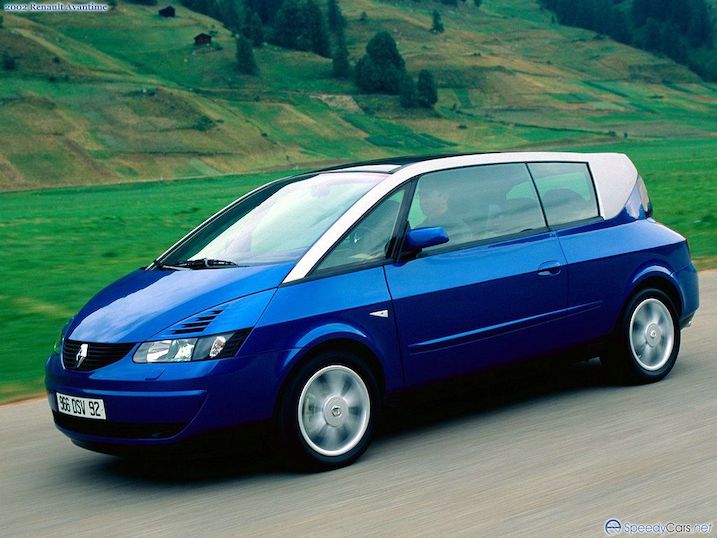In the vast landscape of automotive history, there are success stories and then there are tales of flops. The Renault Avantime, introduced in 2001, unfortunately falls into the latter category. Despite its daring design and innovative features, the Avantime failed to resonate with consumers and achieve the commercial success that Renault had hoped for. Let’s delve into the reasons behind the Avantime’s failure and examine why this visionary vehicle ultimately fell short.
Renault Avantime: Design
One of the primary factors contributing to the Avantime’s lackluster performance was its unconventional and polarizing design. The Avantime’s avant-garde styling, blending coupe and multi-purpose vehicle elements, proved to be ahead of its time. While some applauded its boldness and uniqueness, many potential buyers were put off by its unconventional appearance. The market was not yet ready to embrace such a daring design, resulting in limited appeal and a niche target audience.
Renault Avantime: Price
Another aspect that worked against the Avantime was its high price point. Positioned as a premium vehicle, the Avantime carried a hefty price tag that put it out of reach for many consumers. With its luxury aspirations, Renault aimed to create an exclusive and aspirational product. However, the steep price tag alienated a significant portion of the market, further limiting the Avantime’s sales potential.
Timing of Avantime’s Release
Furthermore, the timing of the Avantime’s release was less than ideal. It entered the market during a period when consumer preferences were shifting towards more practical and efficient vehicles, such as SUVs and crossovers. The Avantime’s unique design and emphasis on style over practicality failed to align with the prevailing trends. As a result, it faced stiff competition from more mainstream and popular models that catered to the evolving demands of the market.
Limited Awareness Among Consumers<
In addition to these challenges, the Avantime suffered from limited marketing efforts and a lack of brand recognition. Renault struggled to effectively communicate the value proposition of the Avantime to potential customers. The vehicle’s unique features and benefits were not effectively highlighted, leaving consumers unaware of what set it apart from competitors. As a result, the Avantime remained largely unknown to the broader consumer base, further hindering its sales potential.
Contributions to Auto Design and Innovation
While the Avantime may have been a commercial failure, it is important to acknowledge its contributions to the automotive industry. The Avantime represented a bold attempt by Renault to challenge traditional design norms and push boundaries. Its pillarless design, individual rear seats, and panoramic glass roof were innovative features that showcased Renault’s commitment to innovation and daring experimentation.
Moreover, the Avantime’s legacy lives on through its cult following among automotive enthusiasts and collectors. Despite its commercial failure, the Avantime has garnered a dedicated fanbase that appreciates its unique design and forward-thinking approach. Its rarity and distinctive aesthetics make it a sought-after collector’s item, ensuring that its impact on automotive history endures.
In conclusion, the Renault Avantime stands as a reminder that even the most visionary and daring creations can fall short in the marketplace. Its unconventional design, high price point, and misalignment with consumer preferences contributed to its lack of commercial success. However, the Avantime’s significance lies not in its commercial performance but in its contribution to automotive design and its lasting impression on enthusiasts. The Avantime serves as a testament to the risks and challenges inherent in pushing the boundaries of conventional thinking in the automotive industry.
Read articles about other unconventional cars.
